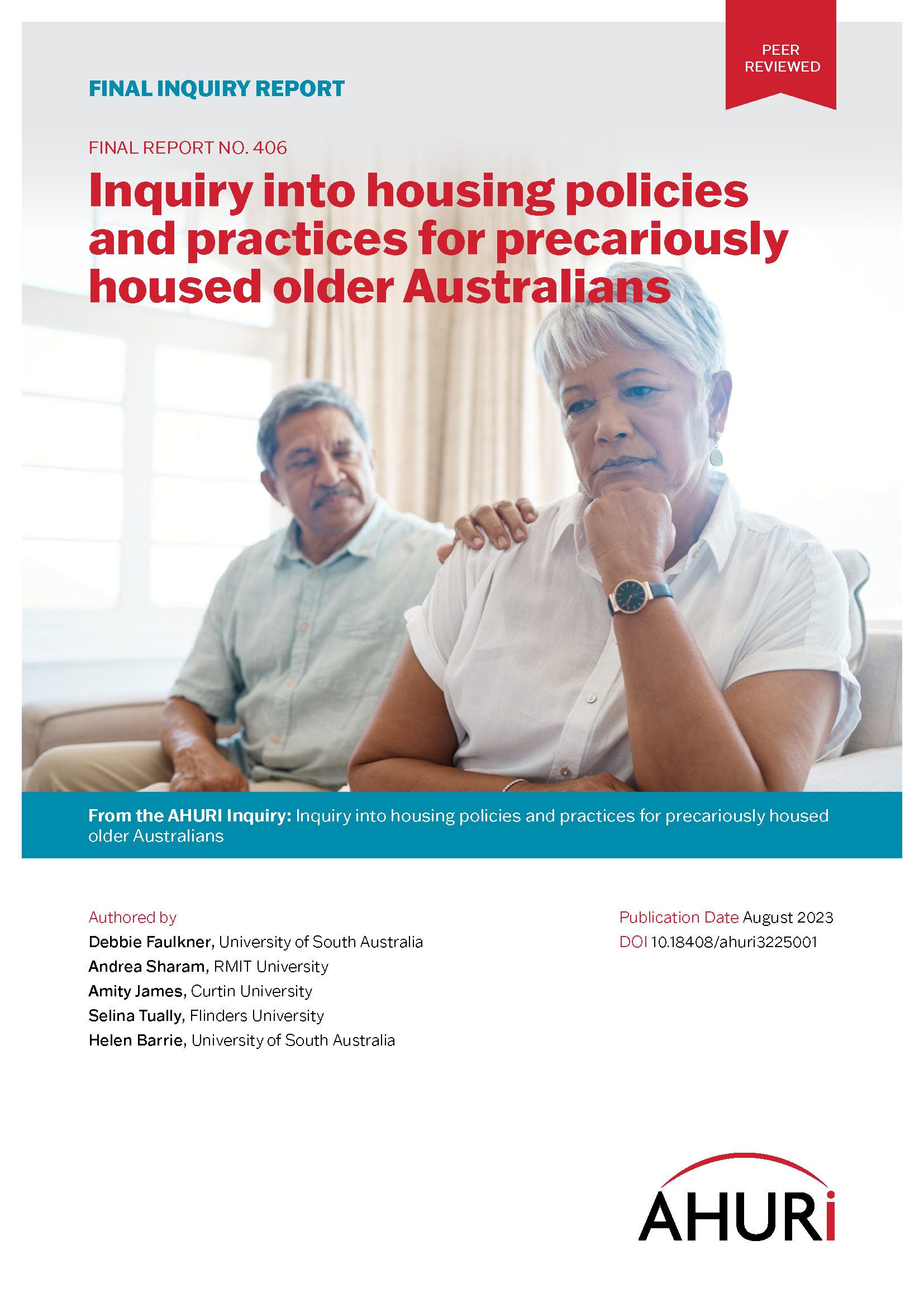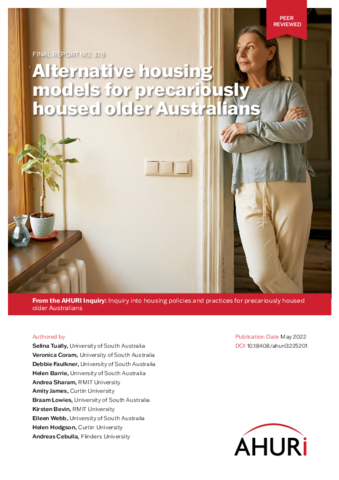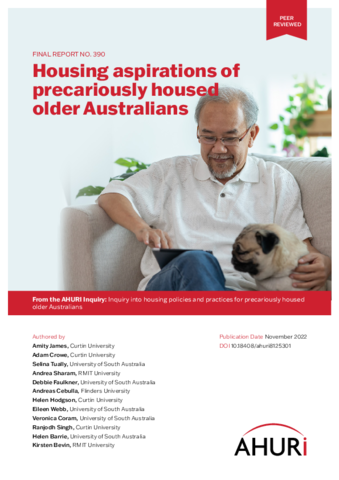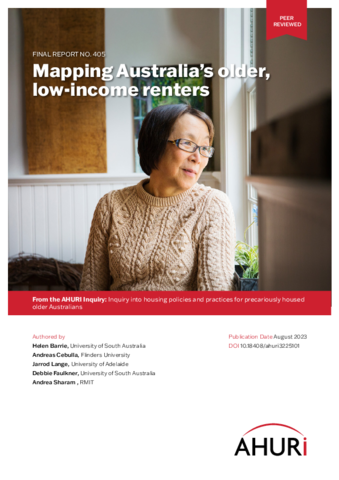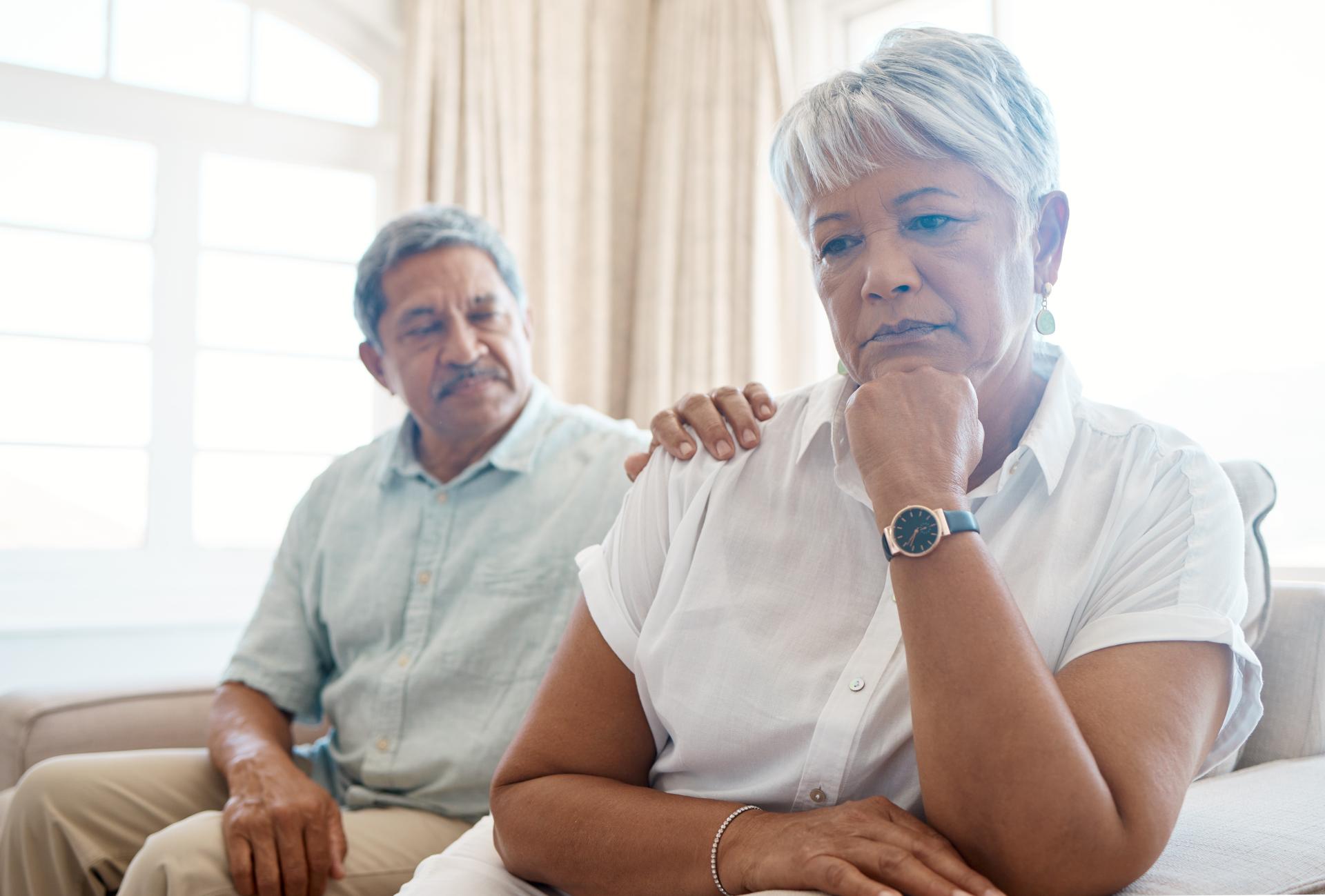
AHURI explores options for older Australians living in unaffordable housing on low incomes
03 Aug 2023
Over the last 20 years, housing options for older Australians on lower incomes have been getting worse with home ownership rates falling, more people carrying their mortgage debt into retirement and reduced access to social housing. The size of the challenge Australia now faces is immense; by 2031 (only 8 years from now) an estimated 440,000 older households will be unable to find or afford suitable housing. A new AHURI Inquiry brings together the findings of three connected research projects to explore how Australia can deliver the types of housing precariously housed, older people need to support their life aspirations and wellbeing.
Lower income older Australians want affordable housing they can own
‘We found that people want housing that is achievable, with some factors gaining greater significance as people get older, such as they want to stay in an affordable home and to live in safe, secure and neighbourhoods,’ says lead researcher, Dr Debbie Faulkner from the University of South Australia.
The Inquiry developed and tested seven composite alternative housing models and explored their suitability through a survey with lower income households.
‘The households we surveyed had clear preferences for a shared equity home ownership model, a cooperative housing model and a transportable housing model,’ says Dr Faulkner. ‘The strong preference for the shared equity model reflects the expectation that it is “normal” to own one’s home in Australia. The subdued response to the other options we presented indicates people’s long entrenched aspirations and a lack of familiarity older people have with “alternative” housing options.’
Borrowing for a small mortgage may help some low income households own their home
Even though many low income older householders can’t afford any form of mortgage, some people are paying large proportions of their income on rent. There are two options that have the potential to deliver forms of home ownership (with the security of tenure and wellbeing that provides) to people who are able to take a smaller loan: shared equity mortgages and land lease mortgages.
For older people whose incomes are low and are not going to rise over time, shared equity is still a difficult proposition. It is most likely they will rely on government equity partners that will need to be patient before they recoup their investments on the future sale or transfer of the property.
In a land lease arrangement, the household owns their dwelling but not the land, which is leased from another person or corporation. As householders don’t own the land component of their housing, they can be eligible for some Commonwealth Rent assistance (CRA), which can improve housing affordability.
‘Not all buyers have sufficient cash to purchase a land lease home, but some could support a small mortgage as a way of obtaining security of tenure and preserving their capital,’ says Dr Faulkiner. ‘However, banks rarely lend for this type of product. This refusal to provide mortgages was criticised as being inconsistent, as banks do lend for other depreciating assets such as cars.’
Regional living might provide more affordable housing
The search for lower cost land for housing, such as lend lease, for lower income older Australians is leading to interest in living in regional areas. Regional centres can provide the land parcels required for low-density development models, and is suited to those who are more risk adverse and willing to accept lower returns.
As part of the Inquiry, the research mapped the increases (and decreases) in populations of older low income households across Australia and predicted changes in each area to 2031, measured in suburb-sized geographical areas.
The largest projected increases are likely to be in peri-urban and outer-suburban regions, with some significant rises in regional and rural locations. For example, in New South Wales, increases are expected in Orange North (117.5%), Muswellbrook (75.1%) and Maitland West (126.2%). In Victoria, increases are expected in the regional centres of Horsham (48%), Shepparton (47%), Ballarat North (72.1%) and Wodonga (93%). For South Australia, Victor Harbor (68%), Port Lincoln (40%) and Murray Bridge (61.4%) are likely to see population increases of older, low-income renters. Western Australia is likely to see similar increases in Albany (54.6%) and Busselton (107.3%). In Tasmania, Sorell–Richmond is expecting a 97.1 per cent increase in older, low-income renters.
Understanding where these populations will grow is the basis to finding acceptable solutions to the challenges of lower income, older people’s housing needs in the 21st Century.
The reports from this inquiry can be downloaded from the AHURI website.

